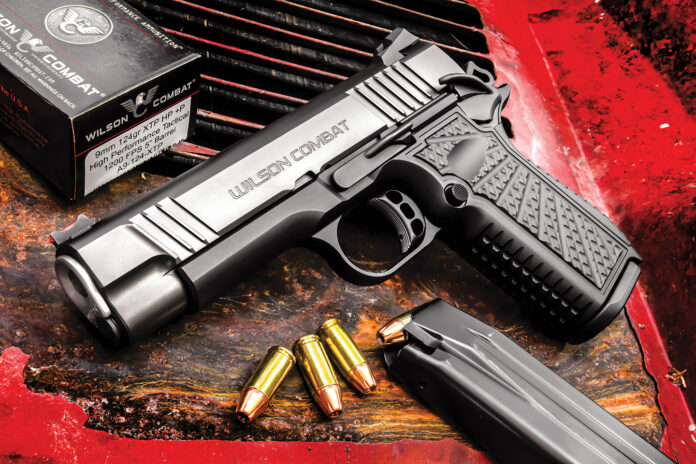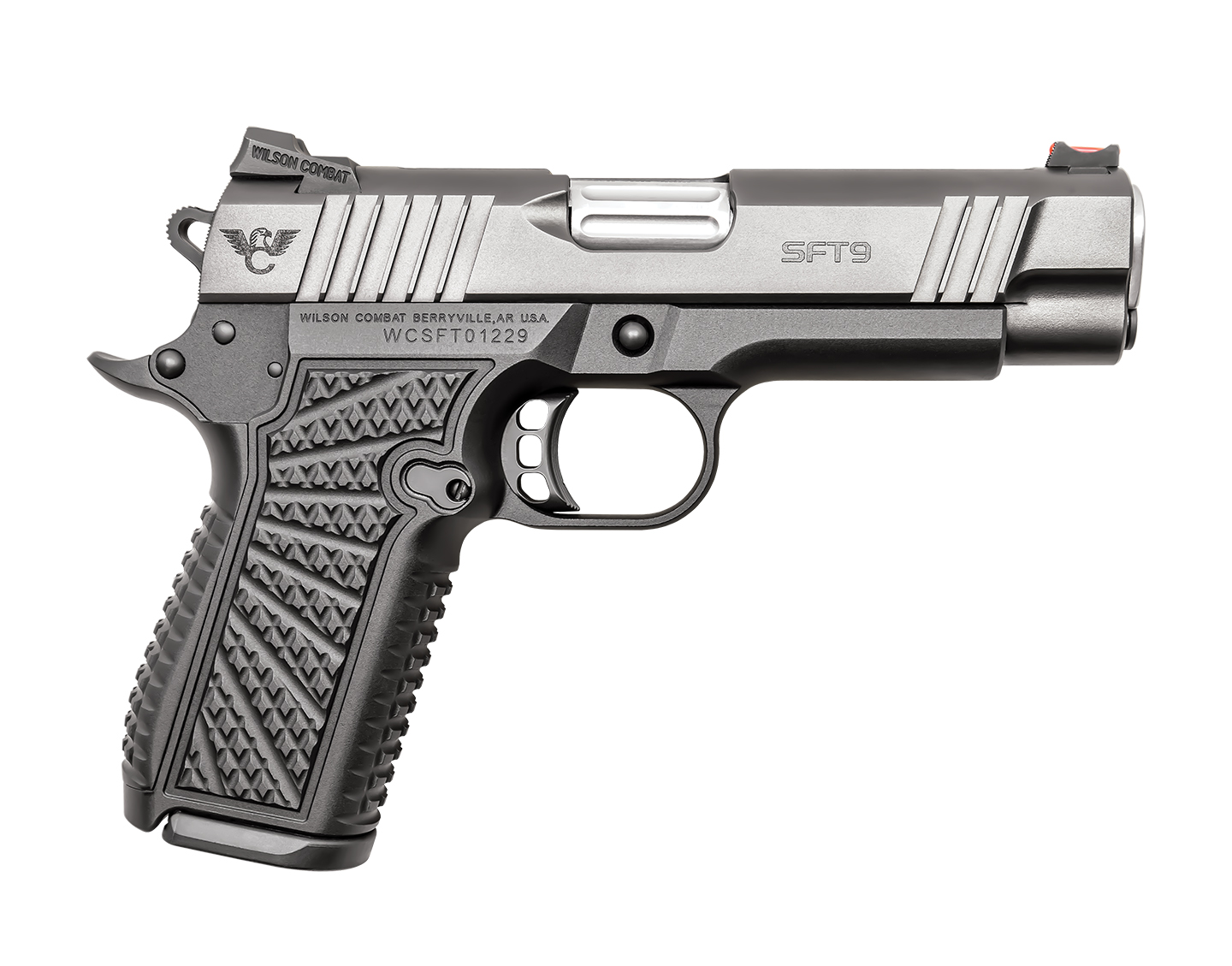Wilson Combat SFT9
By Massad Ayoob
The rare combination of target accuracy and in-the-trenches reliability
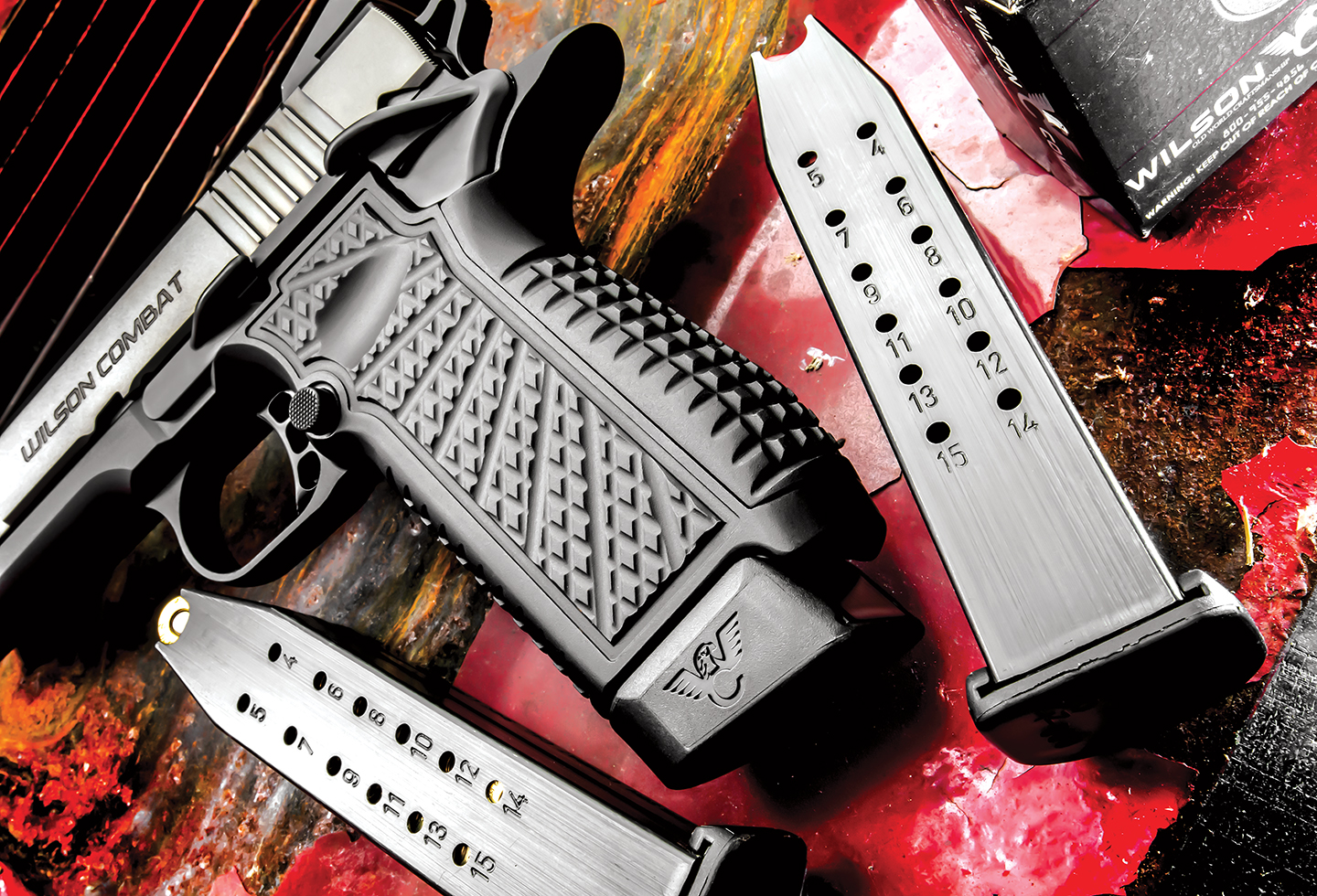
Bill Wilson is an old friend, going back to the 1970s when we were both “young guns” on the pro tour of handgun competition. Bill went on to become one of the great masters of gunsmithing the 1911 pistol, and from there, became the largest and most successful manufacturer of high-quality “boutique” 1911s. When he reimagined the 1911 pistol, beginning with his EDC X9 pistol, I was among the first testers. For a little while now, I’ve been one of his content providers on the Wilson Combat YouTube channel, and when I was at the Wilson Combat factory in Berryville, Arkansas to record a few more in November of 2022, I got to meet the newest iteration of his design, the SFT9, up close and personal.
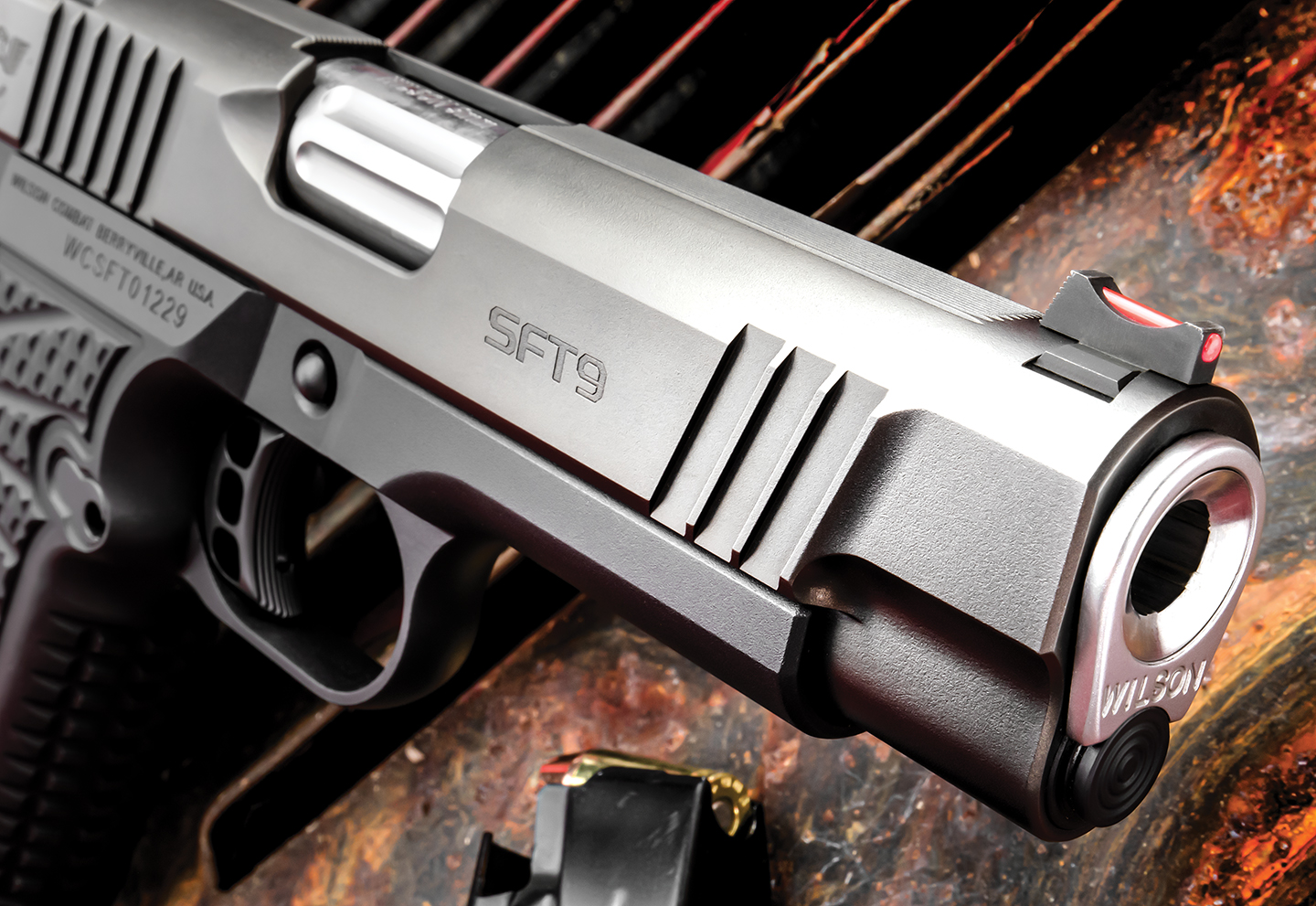
First Glance
Having toured the factory, I can tell you that all these guns in what WC calls the X9 series frames are forged and machined out of solid blocks of T6-7075 aluminum. The “SF” in SFT9 stands for Solid Frame, distinct from the original EDC X9’s unique grip panel system: The SF series has no grip panels per se, the whole grip frame being forged en bloc. The “T” in the designation is for Trak, the grip pattern. The Trak pattern, first seen on the WC Experior pistol, is essentially a “grenade grip” with large gaps between the protrusions that fill in the flesh of the firing hand and create an excellent marriage of shooter with shooting machine, without any sharp edges to abrade flesh or clothing in concealed carry. Finally, the 9 in the designation is for its 9mm Luger chambering, with a fifteen-round magazine standard, an eighteen-rounder optional for backup, and a ten-round mag available for Draconian states which allow nothing more.
The slide has a rounded top with a single narrow flat between the sights, another homage 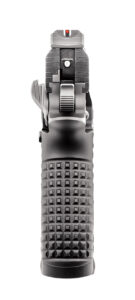 to its Experior predecessor. I was delighted to find that the 4.25” barrel had a standard bushing, and I’m sure that somewhere John Moses Browning is equally pleased with that. It makes takedown and reassembly easier in my experience, which with 1911’s, dates back to 1960.
to its Experior predecessor. I was delighted to find that the 4.25” barrel had a standard bushing, and I’m sure that somewhere John Moses Browning is equally pleased with that. It makes takedown and reassembly easier in my experience, which with 1911’s, dates back to 1960.
The finish is DLC, which stands for Diamond-Like Carbon, a physical vapor deposition. Bill tells me it is virtually impervious to surface wear from leather holsters and resistant to it even in Kydex scabbards, which are notorious for making a pistol’s exterior look “salty” after enough draws. The slide’s grasping grooves are traditional JMB, too. They’re on the front of the slide as well as the back, something I don’t care for but which much of the rest of the shooting world seems to demand.
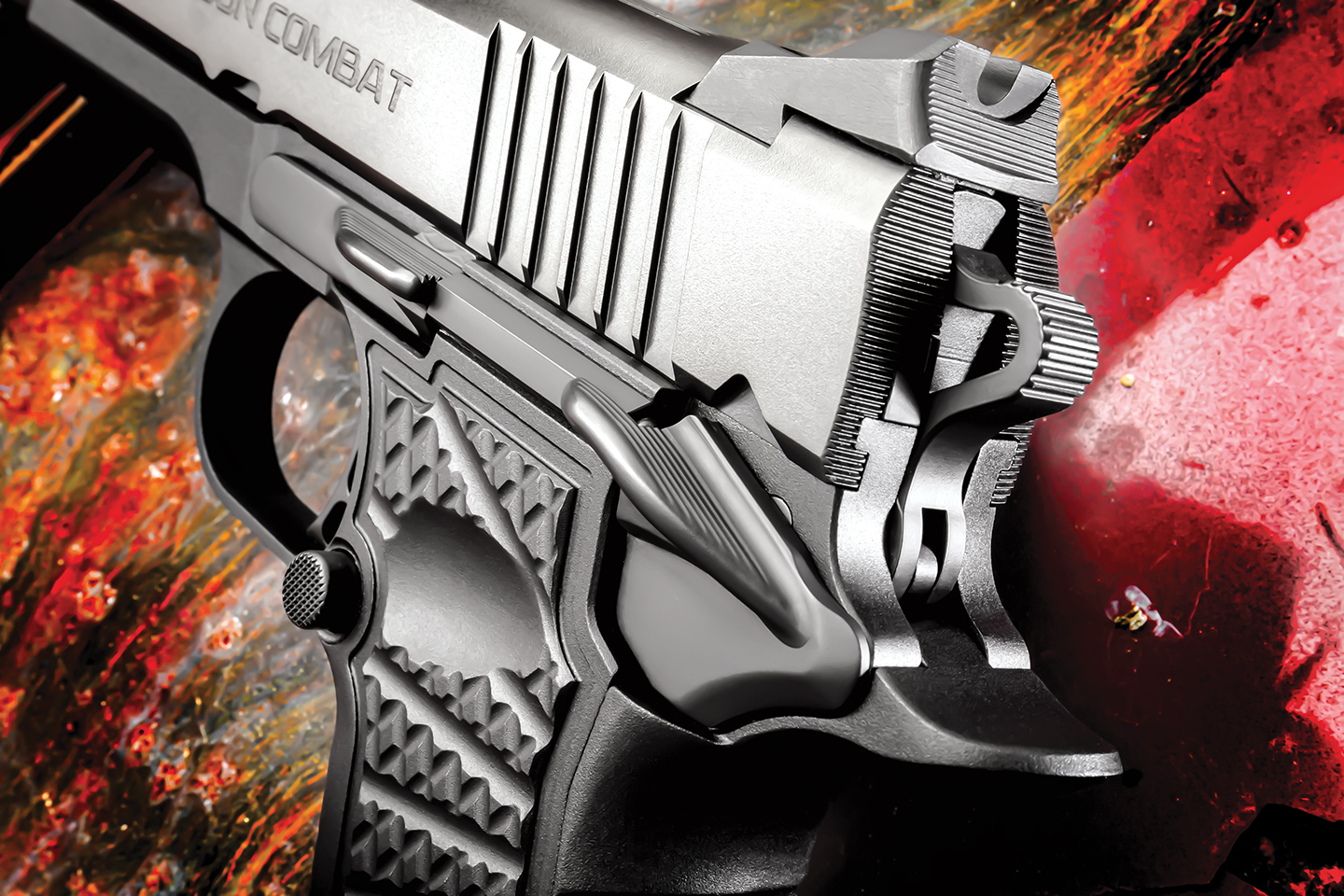
“Feel” Factor
The solid frame allows a remarkably small grip circumference for a double-stack pistol, and a width of only 1.155″, it feels at first grasp like a single stack. For a few years now, arthritis has limited my gun hand thumb’s range of movement to the point where it’s difficult to dump the magazine from a 1911, but with the SFT9’s combination of reduced grip girth and the Wilson Bulletproof mag release button, I was delighted to find that I could speed load it “the old-fashioned way.”
The redesigned grip frame also reduced trigger reach, at least in my hand. I could get the distal joint of my trigger finger, known to double action shooters as “the power crease” because of its improved leverage, onto the trigger while still keeping the barrel in line with my forearm. And, of course, it’s a boon to shorter-fingered shooters.
Finally, given the combination of the slimmer grip circumference allowing more flesh and bone to wrap around in the primary firing grasp, and the Trak pattern, control was excellent. Even firing at a rate of five to six shots per second, the SFT9 never shifted in my hand. Given that the pistol weighs 29 ounces empty and has a low bore axis, muzzle rise was minimal between shots, and the gun was back on target by the time the trigger had reset.
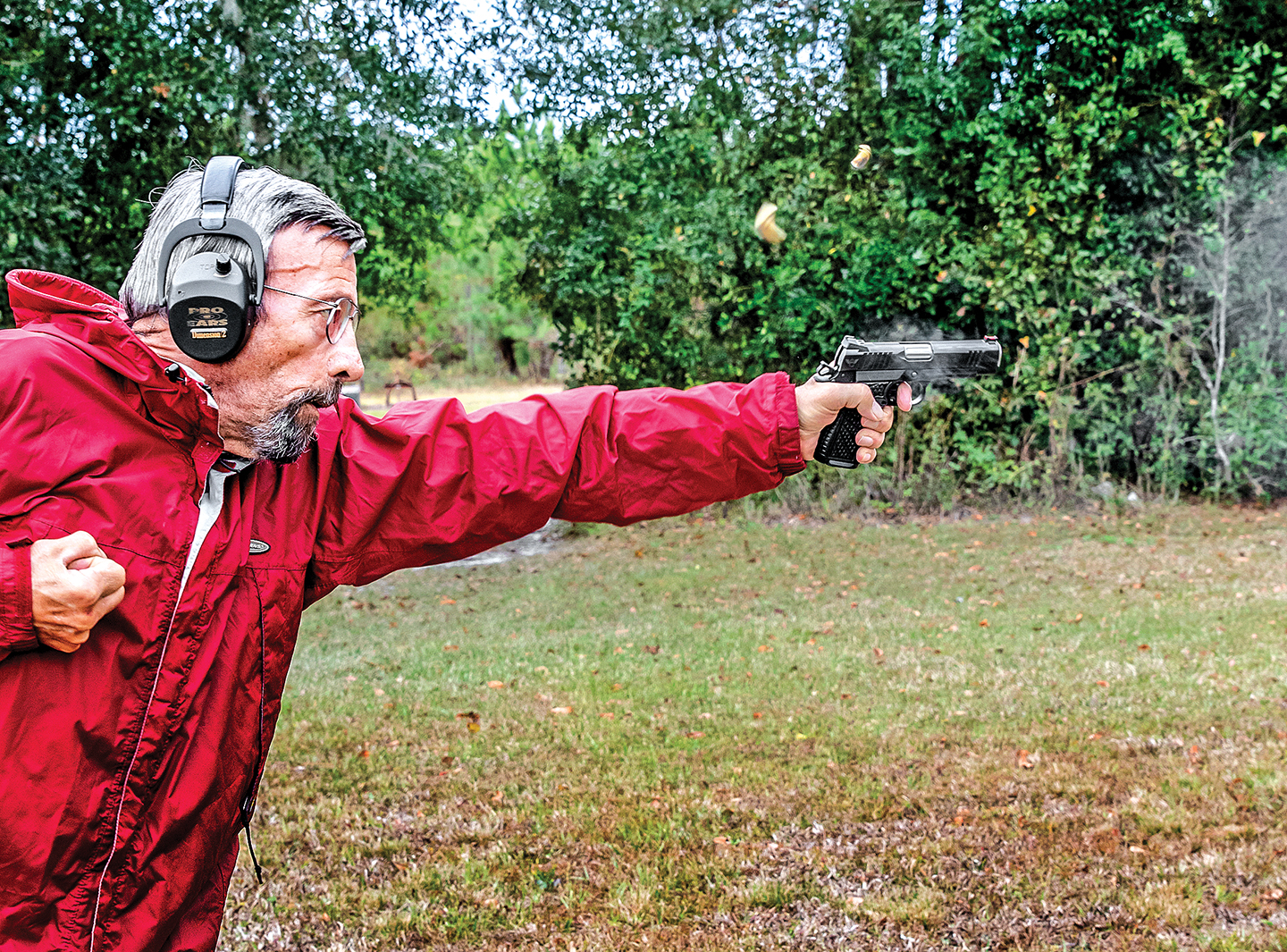
Trigger
A sweet trigger is one attribute expected from 1911s in general and WCs in particular, and this specimen did not disappoint. There was a very short take-up followed by a very slight roll that was imperceptible at speed before the final clean break. There was no backlash or perceptible trigger movement subsequent to sear release. On the Lyman digital trigger pull gauge, the test SFT9 averaged just under four and a quarter pounds, 64.22 ounces to be exact. This is within established spec for a “duty” trigger pull on a carry gun of this type … and turned out to be quite controllable.
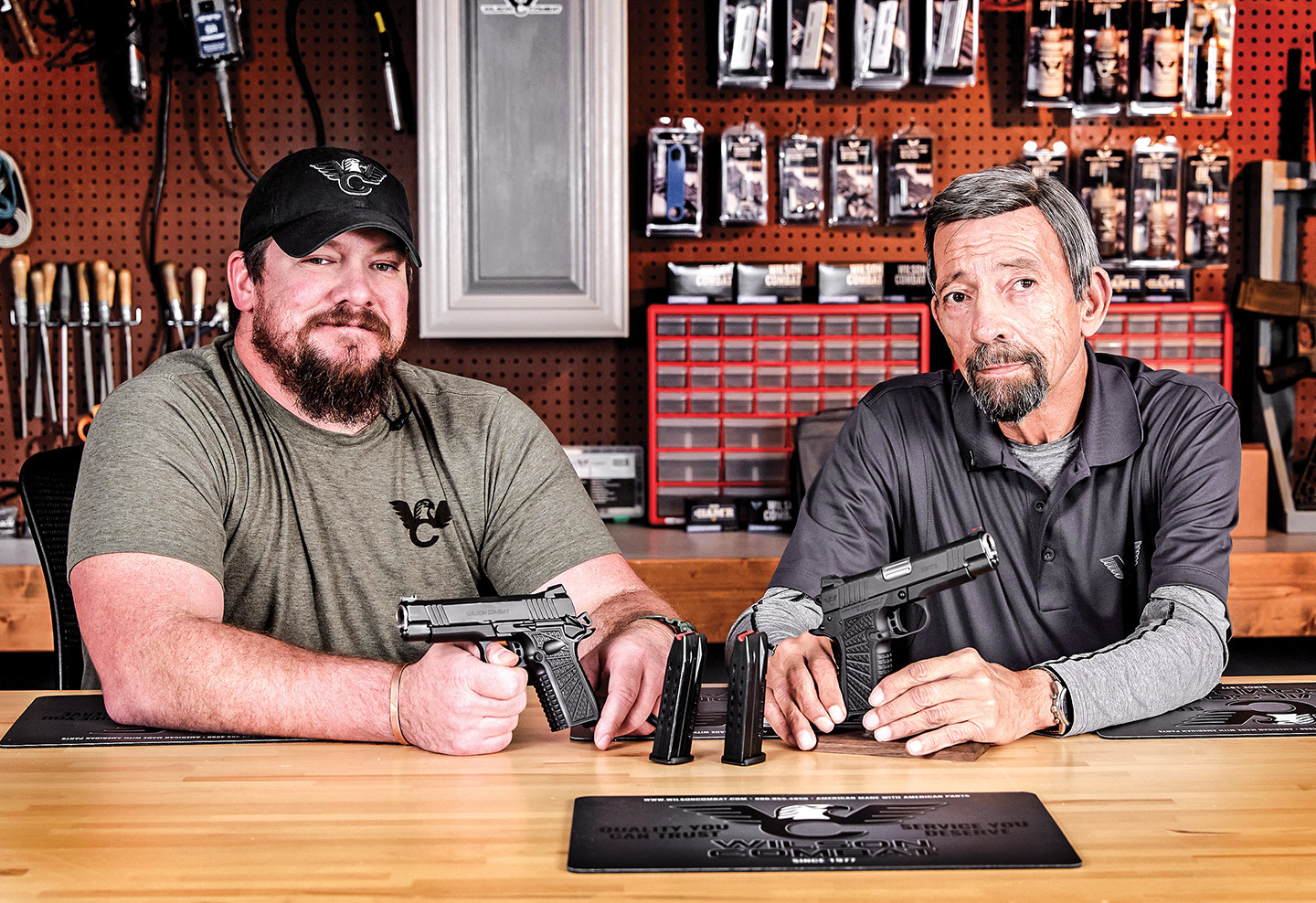
Accuracy
On Target’s editor, Ben Battles challenged me on this one: he told me that for pistols in this prestige category to make it into the magazine, they’d have to deliver 1.5-inch groups from 25 yards. It will surprise no one familiar with the brand in question that the SFT9 made the cut.
Regular readers know my testing protocol; Caldwell Matrix rest on a concrete bench at 25 yards, each five-shot group measured once overall center to center between the farthest-flung hits and then again for the best three. The overall five-shot group gives a good preview of what an experienced trigger-puller can expect from human hands at that distance under perfect conditions, and experience has taught me that the “best three” will closely equal what the same gun/cartridge combination could do for all five shots from a machine rest.
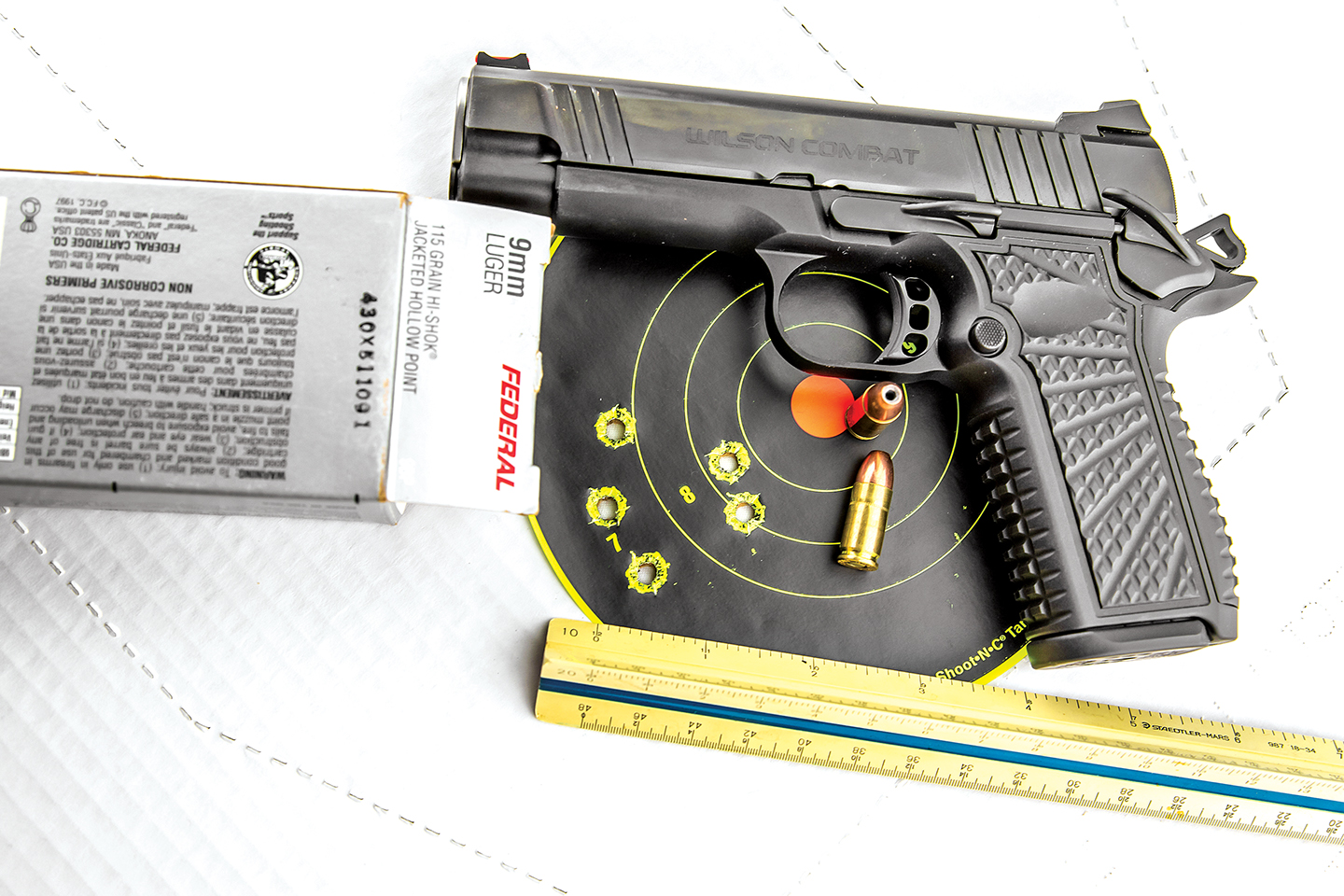
With each gun, I try to test with exemplars of the caliber’s three most popular bullet weights. For the popular 147-grain subsonic 9mm load, I chose Winchester jacketed truncated cone training rounds. The SFT9 drove five shots into 2.35”, with the tightest trio under an inch at 0.95”.
Realizing that a premium-priced pistol should be tested at least once with premium-priced ammunition, I selected Nosler Match Grade jacketed hollow point for the 124-grain load. It grouped all five shots into 3.50”, four of which measured 1.95” and the best three, in 1.00” even. (I measure to the nearest 0.05”.)
115-grain is no longer the police/self-defense standard loading for 9mm Luger that it once was, but remains the most popular bullet weight for training. The 115-grain load I chose was some of the last of my hoard of jacketed hollow point Federal 9BP, the one standard pressure JHP 9mm that, back in the day, always seemed to expand in flesh and never seemed to generate “9mm stopping failure horror stories.” It was also match-accurate and proved itself so here: the symmetrical, pentagon-shaped five-shot group measured 1.35” for all five shots, with the best three barely less than that at 1.30”. One of the things you’re paying for in a gun like this is the rare combination of target accuracy with in-the-trenches reliability. WC delivered that.
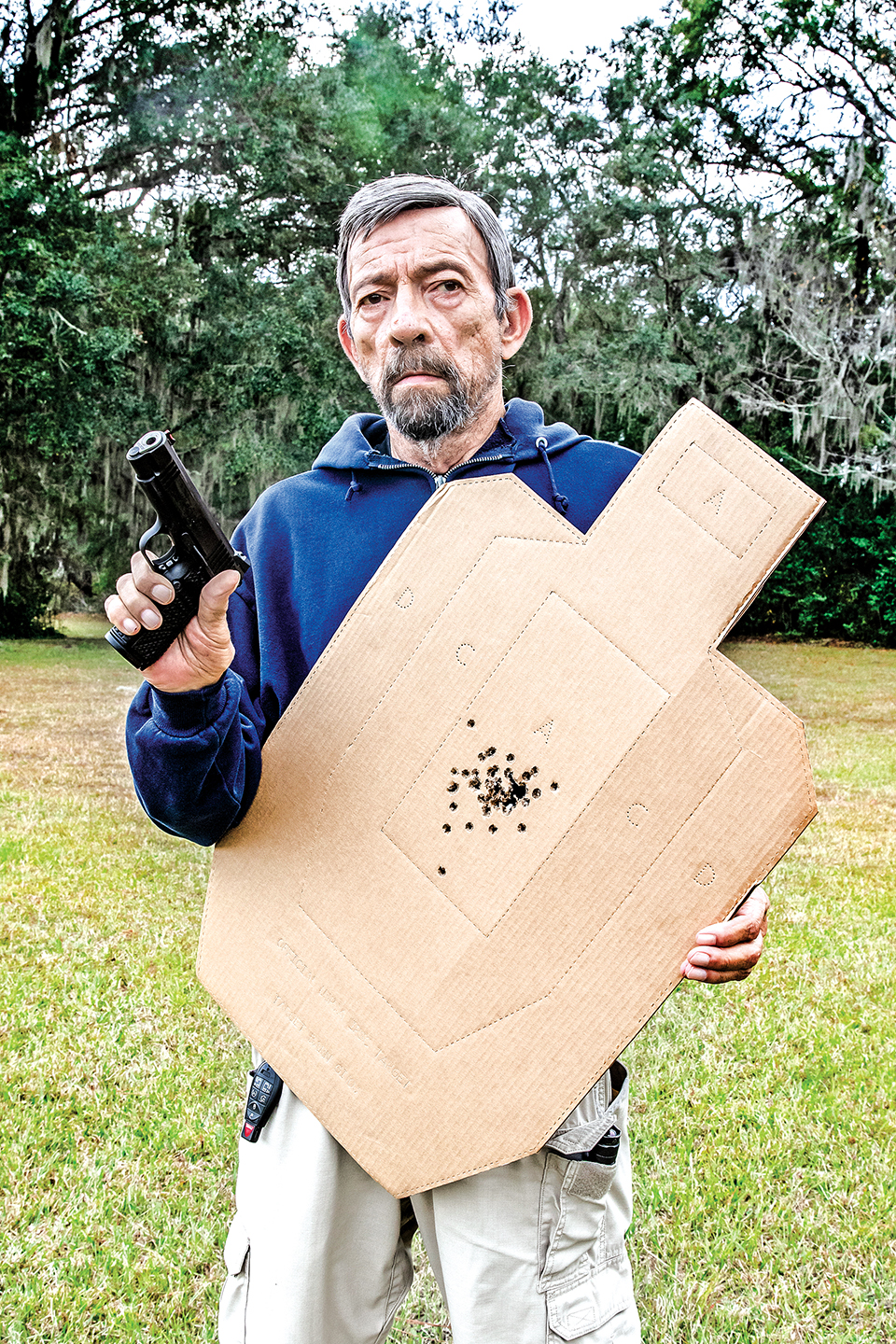
Shooting Under Time
Time pressure tells you how “shootable” a gun is under stress. I shot a 60-round PPC-based qualification that included “weak” hand only, “strong” hand only, and various two-handed and cover stances, which included a lot of reloads. The easy trigger made it, well, easy.
Reloads were fast, as they were with full-size 1911s when I was young. A beveled mag well combined with a tapered-top double stack magazine made insertion smooth and fast. The big sights were easy for old eyes to see, which was important because I shot the qualification without my usual corrective lenses.
Bottom line: the score was 300 out of 300 points, with all sixty bullet holes in a group that measured five and a half inches. I dunno how you read that, but I was happy as hell with it.
The SFT9 has proven its shootability in competition in hands more skilled than mine. The Wilson Combat team fields, among other Master shooters, Guy Joubert and Austin Proulx. Using the SFT9, Guy won the CCP (Concealed Carry Pistol) division of the 2022 Oklahoma State IDPA Championships with one, and Austin used another to do the same at the Utah State Championships and come in second overall CCP at the National Championships last year. To fit the CCP-size “IDPA box,” they had to slightly shave down the polymer floorplates of the magazines.
See the impressive line of Wilson Combat double-stack 1911s at your nearest dealer, or for more information, contact Wilson Combat: Tel.: (800) 955-4856; Web: www.wilsoncombat.com.















